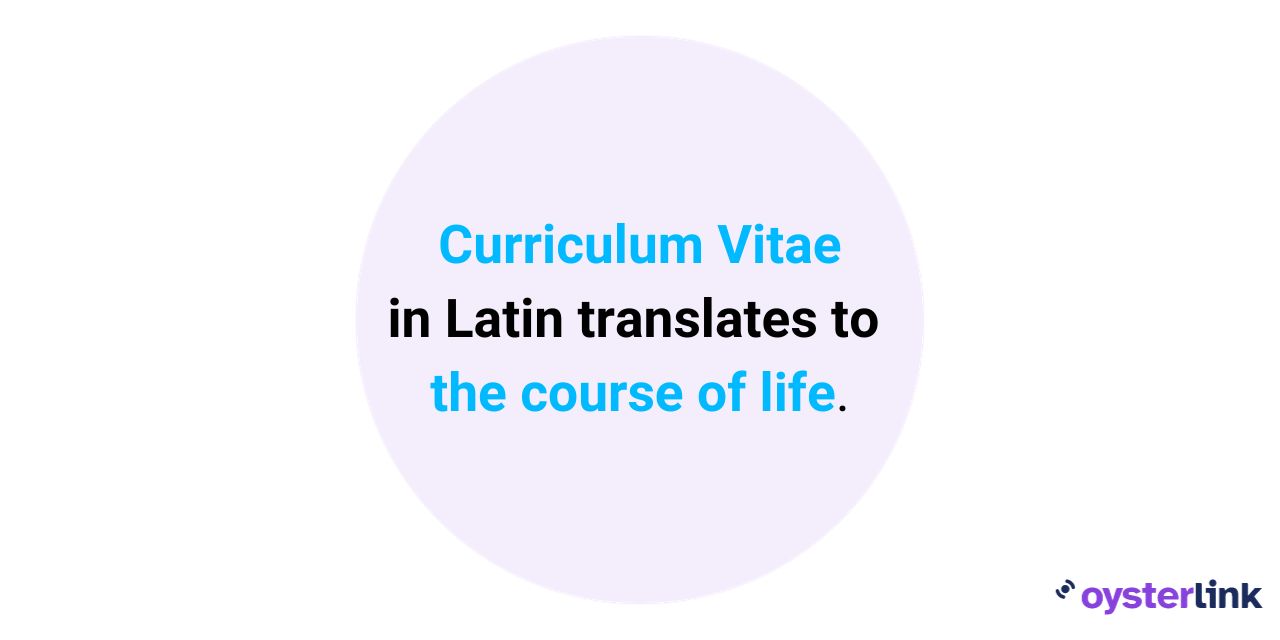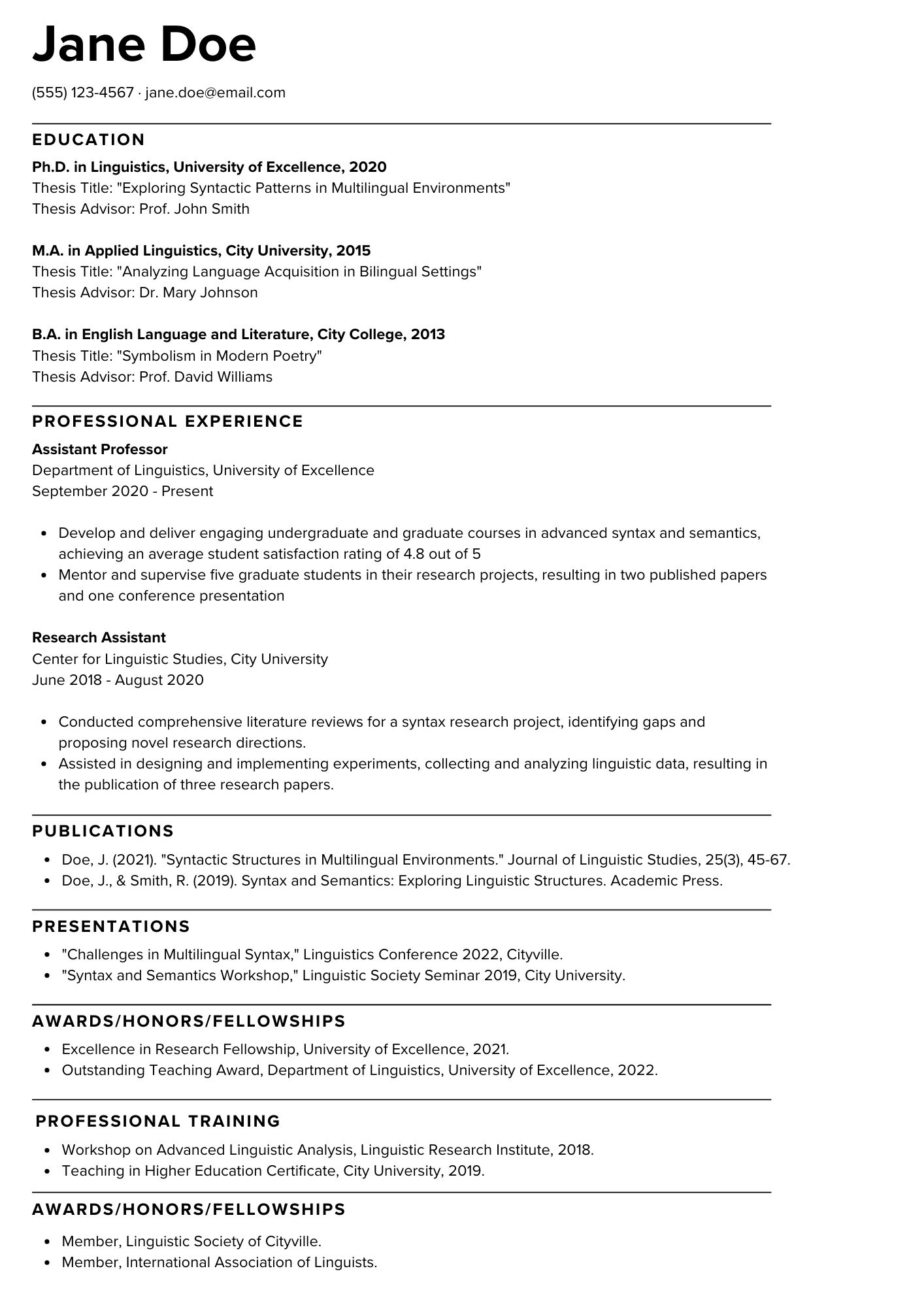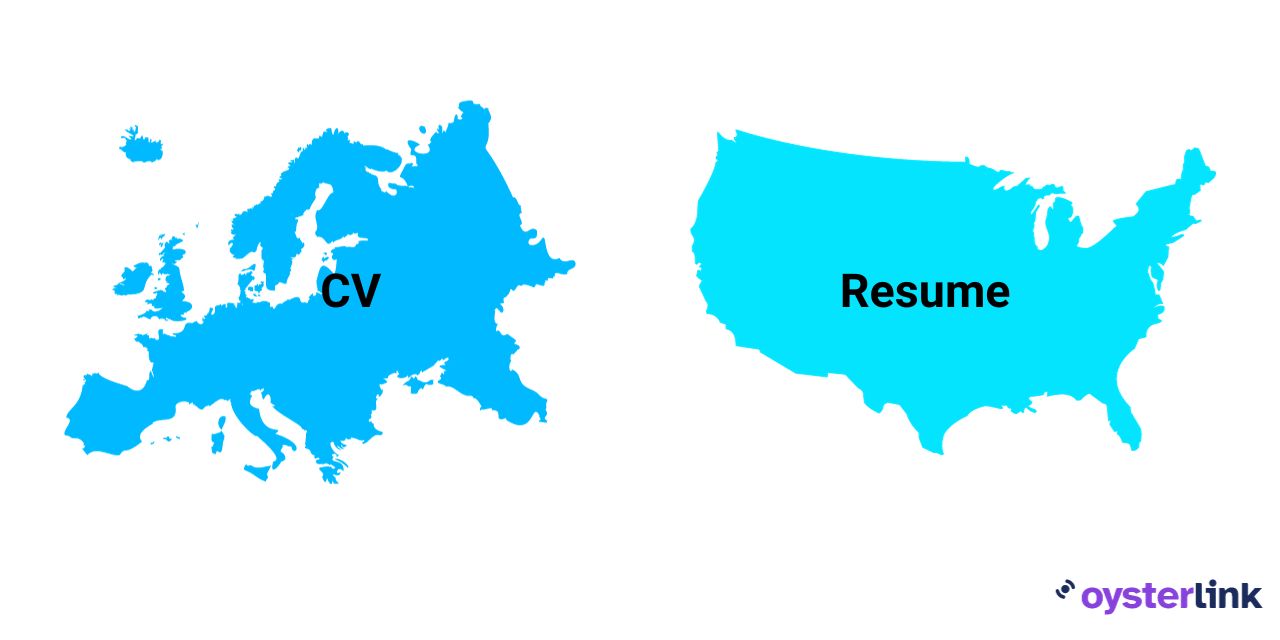Understanding the difference between a CV and a resume is important to present yourself effectively to hiring managers.
Submitting a long list of your professional history and academic qualifications in the form of a CV when the hiring manager is looking for a resume won’t work to your advantage.
At the same time, providing a resume when a recruiter is expecting a CV can make you appear unqualified, which can result in the recruiter moving on to the next candidate.
To help you in overcoming this common job search challenge, we will discuss distinctions between a CV and a resume, the content each document should include and how to determine which one you’ll need to provide.
What Is a CV?
The term CV stands for “Curriculum Vitae”, a Latin phrase that means “course of life”.

It is a detailed list of your academic career and employment history.
In the United States, CVs are primarily used in academic and research positions.
If a hiring officer asks for a CV, it means they want an in-depth document outlining your academic achievements, such as publications, research and presentations in your professional life.
Below is an example of a CV.

What Does a CV Include?
A CV can be categorized into three sections. These include the core section, the optional section and supplementary documents.
The core section encompasses personal details, educational background and professional associations.
In the optional section, you can mention relevant skills you believe are valuable to an employer, along with acquired languages and other details about your organizational memberships. This is not mandatory, so review and only mention what you find fitting for your application.
Lastly, supplementary documents include additional attachments aimed at reinforcing the information presented.
For example, when applying for an academic or research position, you may include a statement of research. A statement of research is a one-page document that provides an overview of your research achievements, ongoing projects and plans.
Another example of a supplementary document is a dissertation abstract. It’s a one to two-page summary of your research that highlights the key points of your work.
Other supplementary documents may consist of a recommendation letter, a cover letter and a transcript of records.
| Core Section | Optional Section | Supplementary Documents |
|---|---|---|
| Applicant information | Skills | Dissertation abstract |
| Education | Acquired languages | Statement of research |
| Experience | Professional and academic hobbies | Cover letter |
| Publications | Professional references | Transcript of records |
| Presentations | Projects and activities you did in your organization | |
| Awards/Honors/Fellowships | ||
| Professional Training | ||
| Professional Affiliations | ||
How Long Should a CV Be?
Most employers prefer it to be limited to two pages. However, it’s normal to extend it further for those with extensive experience.
[Source: Keele University Research]
This bar graph is interactive. Hover your mouse over different parts of the map to see detailed data.
What Is a Resume?
A resume is a brief overview of an individual’s relevant education, experiences, skills and qualifications tailored for potential employers.
“Résumé” is a French word meaning “summary”.

Its purpose is to communicate to prospective employers why you are a suitable fit for a job in an easy-to-read, logical and brief format.
Below is an example of a resume.

What Does a Resume Include?
A typical resume format includes the following components:
- Contact Information: Ensure your contact details are accurate and up-to-date for employers to reach you easily.
- Professional Experience: A concise statement summarizing the candidate’s key qualifications and career objectives.
- Education: Details about the candidate’s educational background, including degrees earned, institutions attended and graduation dates.
- Work Experience: A comprehensive section highlighting the candidate’s relevant work history, typically organized in reverse chronological order.
- Skills: An enumeration of the candidate’s skills, including technical, soft and industry-specific competencies.

On average, an individual takes 1 hour and 10 minutes to complete their resumes, incorporating the components mentioned above.

How Long Should a Resume Be?
Length preferences vary depending on the job position’s level or seniority. Based on a survey, 52% of hiring managers for staff-level positions preferred one-page resumes, 44% liked two pages and only 3% favored three pages.
This pie chart is interactive. Hover your mouse over different parts of the map to see detailed data.
For executive-level positions, 7% liked one-page resumes, 61% preferred two pages and 31% favored three pages.
This pie chart is interactive. Hover your mouse over different parts of the map to see detailed data.
What Are the Key Differences Between a CV and a Resume
While people often use these two terms interchangeably, they serve distinct purposes, contain different content and follow separate formats.
Below, we outline the main differences between a CV and a resume.
What It Emphasizes
A CV emphasizes providing a thorough overview of an individual’s academic and professional journey, showcasing achievements such as degrees earned, completed courses, research endeavors and any scholarly contributions.
In contrast, a resume prioritizes the presentation of the most relevant qualifications, skills and experiences tailored specifically to the requirements of the position.
Length
CVs tend to be longer, varying in length depending on an individual’s experience. They often extend beyond two pages, allowing for an in-depth exploration of one’s entire career.
On the other hand, individuals early in their careers or recent graduates typically limit resumes to a page. Being concise aids in swiftly capturing the employer’s attention and demonstrating the applicant’s suitability for the job.
Purpose
Academic positions, fellowships and grants typically require the submission of a CV, while jobs in business, non-profit and public sectors often involve submitting a resume.
Design Layout
A CV should be plain, simple and easy to read.
Resumes offer more flexibility, especially for jobs in creative fields.
Approach to Job Applications
A CV serves as an academic diary that provides a thorough listing of an individual’s academic accomplishments, research contributions and professional journey. Its comprehensive nature allows job seekers to use a CV for various job applications.
On the other hand, a resume demands customization for each job application. Customizing your application means matching your qualifications with the job description and highlighting how your skills make you a perfect fit for the position.
Preferred Initial Section of the Document
A CV typically begins with details about an individual’s education, while a resume leads with work experience.

CV or Resume: Which One To Submit?
The choice of which one to submit depends on the industry, region and the specific requirements of the position you are applying for.
Based on the Industry
When applying for a position in the non-profit, private or public sector, the employer will most likely request a resume. These industries benefit from resumes as they provide a quick overview of an applicant’s most relevant qualifications and experiences, making it a more practical and effective tool for initial screening and decision-making.
However, if you’re applying for academic positions or in the field of medicine, you’ll need to submit a CV. These specialized professions require a CV as it enables candidates to provide a detailed and comprehensive overview of their educational background, research contributions, publications, clinical experiences and other relevant accomplishments.
Based on the Region
When applying for a job in the US and Canada, the general expectation is to submit a resume.
In India, South Africa and Australia, private sectors need a resume, while the public sector asks for a CV.
On the other hand, most European countries, along with New Zealand, use CV for job applications.

Based on Specific Requirements of the Job
Certain roles, like an administrative position in academe or the medical field, usually require a resume. However, due to the specialized nature of the mentioned industries, it might be necessary to provide additional details commonly found in a CV, such as professional training, affiliations or language proficiency.
If you find yourself uncertain about the specific document required, it’s always advisable to seek clarification from the recruiter before submitting your application.

In summary, knowing the difference between a CV and a resume is crucial when job hunting. This understanding will help you make a stronger impression on potential employers and increase your chances of landing the job you want.
Subscribe to OysterLink for the Latest Insights and Industry Trends
OysterLink is here to help job seekers effectively present themselves as top candidates. By providing practical advice, industry best practices and examples, we guide individuals in choosing the right document to highlight their qualifications.
Subscribe now to receive more insights and tips to help you achieve your career goals.
Frequently Asked Questions
It depends on the specific requirements of the job or industry to which you’re applying.
Princeton University advises that if a Ph.D. isn’t required for the position, a resume is suitable.
Update your CV whenever there are significant changes or accomplishments in your professional and academic life, such as receiving an award, earning a new certification or giving a presentation.
For resumes, it is recommended to review and update it after a performance review with your manager to align your document with any changes in your role, skills or achievements.
One of the most common mistakes people make when writing a CV or a resume is failing to incorporate keywords and phrases from the job description. Many employers use Applicant Tracking Systems (ATS) to filter applications. If your resume or CV lacks these essential keywords, you’re likely to end up not getting reviewed by the hiring manager.
About 70% of CVs don’t meet the criteria set by Applicant Tracking Systems (ATS). To get through the ATS filter, use the same keywords.

To identify important keywords, scan the job description for repeated or emphasized terms.
For example, if you’re applying for a software developer position and the job description repeatedly mentions “web development”, “agile methodology” and “Java programming”, these are likely keywords you should include in your application.
Another common mistake is sending a CV or resume with spelling errors. A survey indicates that 50% of CVs have spelling mistakes, even with numerous online tools for spell checks.

Lastly, using an unprofessional email address is a common oversight in the job application process. It can significantly impact the first impression you make on potential employers.
In a survey, 35% of employers said they would reject your resume if it has an unprofessional email address.

Submitting your CV or resume is often best in PDF (Portable Document Format), although DOCX (Microsoft Word) files may also be accepted in certain situations.
PDF is generally preferred due to its consistent formatting across devices. A DOCX file can sometimes alter its formatting depending on where it is opened or downloaded, potentially resulting in a cluttered appearance for your CV or resume.
In general, including a photo in your resume or CV is not recommended, unless a specific appearance is required for the position, such as in acting or modeling roles.









